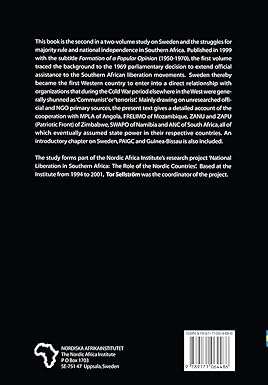





Sweden and National Liberation in Southern Africa (two volumes)
Check my rate
| Main centres: | 1-3 business days |
| Regional areas: | 3-4 business days |
| Remote areas: | 3-5 business days |






| Main centres: | 1-3 business days |
| Regional areas: | 3-4 business days |
| Remote areas: | 3-5 business days |
Two Volumes, Nordiska Afrikainstititet, Uppsala, hardcovers, illustrated, indices, condition: as new.
In 1969, the Swedish parliament endorsed a policy of direct assistance to the liberation movements in Southern Africa. Sweden thus became the first Western country to enter into a relationship with organizations that elsewhere in the West were shunned as 'Communist' or 'terrorist'. This book traces the background to the relationship. Presenting the actors and the factors behind the support to MPLA of Angola, FRELIMO of Mozambique, SWAPO of Namibia, ZANU and ZAPU of Zimbabwe and ANC of South Africa, it addresses the question why Sweden established those close relations with the very movements that eventually would assume state power in their respective countries. The second volume (appearing in late 1999) will discuss how the support was expressed, covering the period from 1970 to 1994.
This is a a two volume study on Sweden and the struggle for national liberation in Southern Africa. Largely drawing from hitherto restricted sources at official and NGO archives, the study focuses on Swedens relations with MPLA of Angola, FRELIMO of Mozambique, SWAPO of Namibia, ZANU and ZAPU of Zimbabwe and ANC of South Africa. The first volume (Formation of a Popular Opinion (1950 - 1970)-- which appeared in 1999--- addressed the question why Sweden established close relations with nationalist movements that elsewhere in the West were shunned as Communist or terrorist. The second volume discusses how the Swedish political, diplomatic and material support to these movements was expressed during the period from 1970 to 1994, i.e. until the first democratic elections in South Africa and the end of the regions Thirty Years War for majority rule. The scope and orientation of the official humanitarian assistance to the very liberation movements that eventually assumed state power in their respective Southern African countries are documented and analyzed. The books thus presents a unique and little known North-South relationship in the Cold War period.